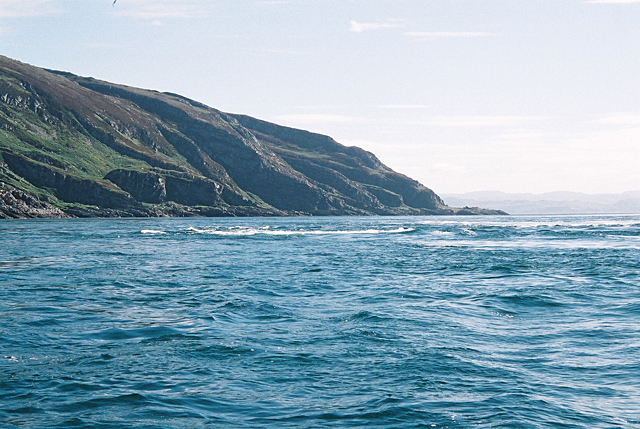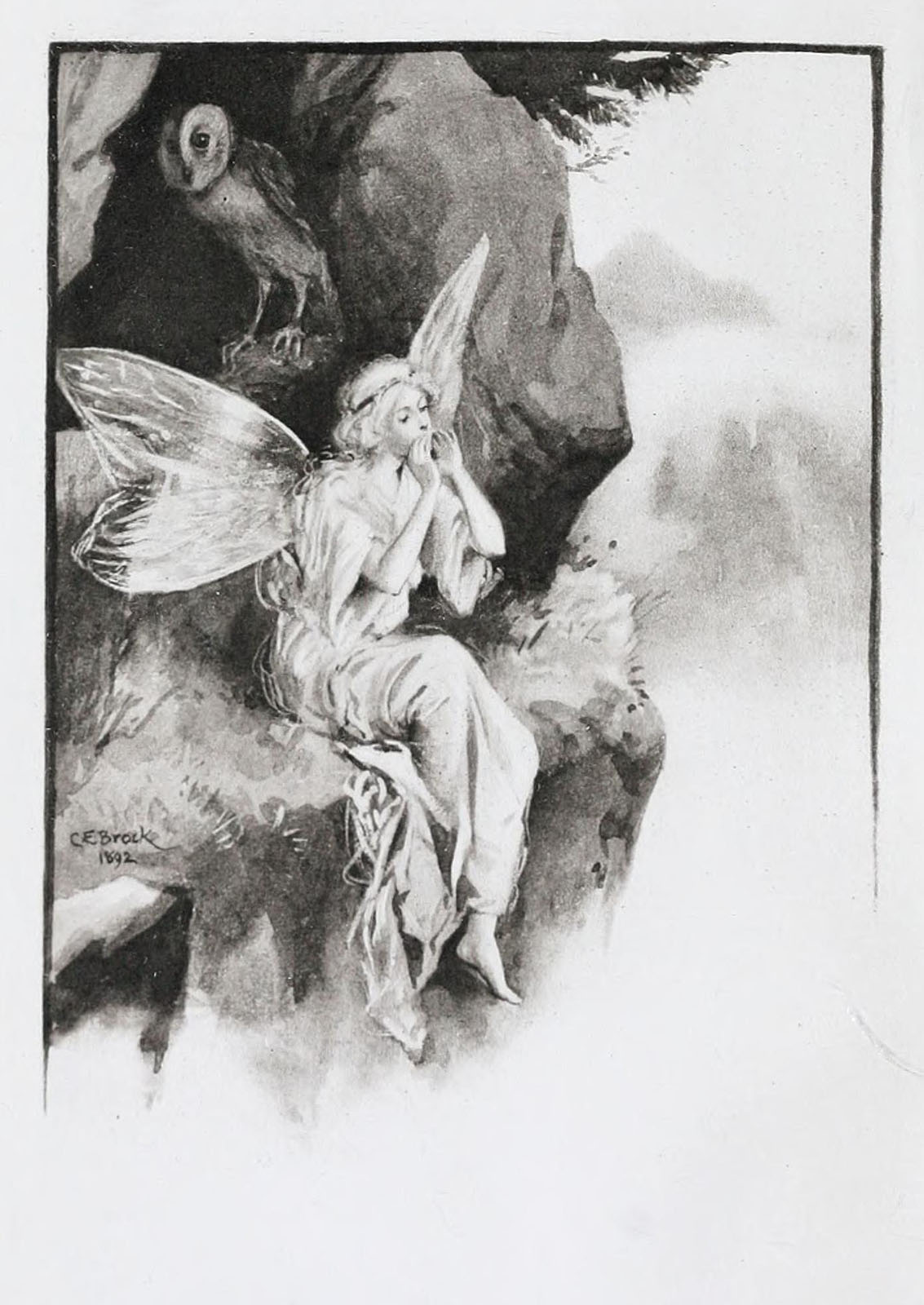|
Sluagh
The Sluagh (, ; ; English: 'host, army, crowd'), or Sluagh na marbh ('host of the dead'), were the hosts of the unforgiven dead in Irish and Scottish folklore., s.v. ''Sluagh''. In the words of British folklorist Lewis Spence, "In the Western Isles of Scotland the Sluagh, or fairy host, was regarded as composed of the souls of the dead flying through the air, and the feast of the dead at Hallowe'en was likewise the festival of the fairies." Usually taking a crescent form, similar to a flight of grey birds, they were said to be able to approach and pick up a person from any direction and then transport them far away through the air, from one island to another. Although they would sometimes rescue humans from dangerous rock clefts, they were generally portrayed as dangerous to mortals. Etymology The Scottish Gaelic name stems from the Old Irish (≈ ), meaning 'host, army; crowd, assembly'. Variant forms include and . It derives from the Proto-Celtic root * (cf. Gaul. 'troops ... [...More Info...] [...Related Items...] OR: [Wikipedia] [Google] [Baidu] |
Aos Sí
' (; English approximation: ; older form: ) is the Irish name for a supernatural race in Gaelic folklore, similar to elves. They are said to descend from the Tuatha Dé Danann or the gods of Irish mythology. The name ''aos sí'' means "folk of the ''sí''"; these are the burial mounds in which they are said to dwell, which are seen as portals to an Otherworld. Such abodes are referred to in English as 'shee', 'fairy mounds', 'elf mounds' or 'hollow hills'. The ''aos sí'' interact with humans and the human world. They are variously said to be the ancestors, the spirits of nature, or goddesses and gods. Evans Wentz, W. Y. (1966, 1990The Fairy-Faith in Celtic Countries Gerrards Cross, Colin Smythe Humanities Press In modern Irish, they are also called ''daoine sí''; in Scottish Gaelic ''daoine sìth'' ('folk of the fairy mounds'). Etymology In the Irish language, ''aos sí'', earlier ''aes sídhe'', means "folk of the fairy mounds". In Old Irish, it was ''áes síde'' ... [...More Info...] [...Related Items...] OR: [Wikipedia] [Google] [Baidu] |
Celtic Mythology
Celtic mythology is the body of myths belonging to the Celtic peoples.Cunliffe, Barry, (1997) ''The Ancient Celts''. Oxford, Oxford University Press , pp. 183 (religion), 202, 204–8. Like other Iron Age Europeans, Celtic peoples followed a polytheistic religion, having many gods and goddesses. The mythologies of continental Celtic peoples, such as the Gauls and Celtiberians, did not survive their conquest by the Roman Empire, the loss of their Celtic languages and their subsequent conversion to Christianity. Only remnants are found in Greco-Roman sources and archaeology. Most surviving Celtic mythology belongs to the Insular Celtic peoples (the Gaels of Ireland and Scotland; the Celtic Britons of western Britain and Brittany). They preserved some of their myths in oral lore, which were eventually written down by Christian scribes in the Middle Ages. Irish mythology has the largest written body of myths, followed by Welsh mythology. The supernatural race called the ... [...More Info...] [...Related Items...] OR: [Wikipedia] [Google] [Baidu] |
Video Game
A video game or computer game is an electronic game that involves interaction with a user interface or input device (such as a joystick, game controller, controller, computer keyboard, keyboard, or motion sensing device) to generate visual feedback from a display device, most commonly shown in a video format on a television set, computer monitor, flat-panel display or touchscreen on handheld devices, or a virtual reality headset. Most modern video games are audiovisual, with Sound, audio complement delivered through loudspeaker, speakers or headphones, and sometimes also with other types of sensory feedback (e.g., haptic technology that provides Touch, tactile sensations). Some video games also allow microphone and webcam inputs for voice chat in online gaming, in-game chatting and video game livestreaming, livestreaming. Video games are typically categorized according to their hardware platform, which traditionally includes arcade video games, console games, and PC game, comp ... [...More Info...] [...Related Items...] OR: [Wikipedia] [Google] [Baidu] |
Scottish Mythology
Scottish mythology is the collection of myths that have emerged throughout the history of Scotland, sometimes being elaborated upon by successive generations, and at other times being rejected and replaced by other explanatory narratives. Nature myths The myths and legends of Scotland have a "local colour" as they tell about the way of life during the olden times, apart from giving a perspective of the nature of the country during various seasons of the year. It was the belief that Beira, the Queen of Winter, had a firm hold on the country by raising storms during January and February thus preventing greenery to emerge. She was considered a tough and brutal old woman who stirred the deadly spiraling action of Corryvreckan, ushering snow, as well as torrents resulting in the overflow of rivers. Even the creation of lochs and mountains were attributed to her. Scottish mythology is not like the Greek and Roman myths as it deals with various aspects of nature. In this conte ... [...More Info...] [...Related Items...] OR: [Wikipedia] [Google] [Baidu] |
Mythological Creatures
A legendary creature is a type of extraordinary or supernatural being that is described in folklore (including myths and legends), and may be featured in historical accounts before modernity, but has not been scientifically shown to exist. In the classical era, monstrous creatures such as the Cyclops and the Minotaur appear in heroic tales for the protagonist to destroy. Other creatures, such as the unicorn, were claimed in accounts of natural history by various scholars of antiquity. Some legendary creatures are hybrid beasts. Some legendary creatures originated in traditional mythology and were believed to be real creatures--for example, dragons, griffins and unicorns. Others are based on real encounters or garbled accounts of travellers' tales, such as the Vegetable Lamb of Tartary, a sheeplike animal which supposedly grew tethered to the earth. Creatures A variety of mythical animals appear in the art and stories of the classical era. For example, in the ''Odyssey'', mo ... [...More Info...] [...Related Items...] OR: [Wikipedia] [Google] [Baidu] |
Irish Words And Phrases
Irish commonly refers to: * Someone or something of, from, or related to: ** Ireland, an island situated off the north-western coast of continental Europe ***Éire, Irish language name for the island and the sovereign state *** Erse (other), Scots language name for the Irish language or Irish people ** Republic of Ireland, a sovereign state ** Northern Ireland, a constituent unit of the United Kingdom of Great Britain and Northern Ireland * Irish language, a Celtic Goidelic language of the Indo-European language family spoken in Ireland * Irish English, set of dialects of the English language native to Ireland * Irish people, people of Irish ethnicity Irish may also refer to: Places * Irish Creek (Kansas), a stream in Kansas * Irish Creek (South Dakota), a stream in South Dakota * Irish Lake, Watonwan County, Minnesota * Irish Sea, the body of water which separates the islands of Ireland and Great Britain People * Irish (surname), a list of people * William Irish, pse ... [...More Info...] [...Related Items...] OR: [Wikipedia] [Google] [Baidu] |
Irish Folklore
Irish folklore () refers to the folktales, balladry, music, dance and mythology of Ireland. It is the study and appreciation of how people lived. The folklore of Ireland includes banshees, fairies, leprechauns and other mythological creatures, and was typically shared orally by people gathering around, sharing stories. Many tales and legends were passed from generation to generation, so were the dances and song in the observing of important occasions such as weddings, wakes, birthdays and holidays or, handcraft traditions. Definition What constitutes Irish folklore may be rather fuzzy to those unfamiliar with Irish literature. Diarmuid Ó Giolláin, for one, declared that folklore was elusive to define clearly. Bo Almqvist (c. 1977) gave an all-encompassing definition that folklore covered "the totality of folk culture, spiritual and material", and included anything mentioned in Seán Ó Súilleabháin's ''A Handbook of Irish Folklore'' (1942). It was not until 1846 that th ... [...More Info...] [...Related Items...] OR: [Wikipedia] [Google] [Baidu] |
Fairies
A fairy (also called fay, fae, fae folk, fey, fair folk, or faerie) is a type of mythical being or legendary creature, generally described as anthropomorphism, anthropomorphic, found in the folklore of multiple European cultures (including Celtic mythology, Celtic, Slavic paganism, Slavic, Germanic folklore, Germanic, and French folklore, French folklore), a form of Supernatural#Spirit, spirit, often with metaphysical, supernatural, or preternatural qualities. Myths and stories about fairies do not have a single origin but are rather a collection of folk beliefs from disparate sources. Various folk theories about the origins of fairies include casting them as either demoted angels or demons in a Christian mythology, Christian tradition, as deities in Paganism, Pagan belief systems, as Spirit (supernatural entity), spirits of the dead, as Prehistory, prehistoric precursors to humans, or as spirits of nature. The label of ''fairy'' has at times applied only to specific Magic (su ... [...More Info...] [...Related Items...] OR: [Wikipedia] [Google] [Baidu] |
Santa Compaña
The Santa Compaña (Galician for "Holy Company") is a deep-rooted mythical belief in rural northwest of Iberia: Galicia, Asturias (Spain), border zones of Castile and León (El Bierzo) and Northern Portugal. It is the Iberian version of the pan-European mythical motif known as the Wild Hunt. It is also known under the names of "Estadea", "Estantiga'" (''estantigua'' in Spanish, from Latin ''hostis antiquus'', meaning "ancient host"), "Rolda", "As da noite" (The Night Ones), "Pantalla", "Avisóns", "Pantaruxada"; all of which are terms that denote the presence of the dead in the world of the living. In Asturias it's prominently well-known as Güestia, which is related to the Asturian word "güeste" (host in English language). Description Although many different versions of the Santa Compaña can be found, the common belief is that of a procession of the dead (or a procession of souls that are in torment) that wander through the village paths of a parish beginning at midnight ... [...More Info...] [...Related Items...] OR: [Wikipedia] [Google] [Baidu] |
Restless Ghost
In mythology and folklore, a vengeful ghost or vengeful spirit is said to be the spirit of a dead person who returns from the afterlife to seek revenge for a cruel, unnatural or unjust death. In certain cultures where funeral and burial or cremation ceremonies are important, such vengeful spirits may also be considered as unhappy ghosts of individuals who have not been given a proper funeral. Cultural background The concept of a vengeful ghost seeking retribution for harm that it endured as a living person goes back to ancient times and is part of many cultures. According to such legends and beliefs, they roam the world of the living as restless spirits, seeking to have their grievances redressed, and may not be satisfied until they have succeeded in punishing either their murderers or their tormentors. In certain cultures vengeful ghosts are mostly female, said to be women that were unjustly treated during their lifetime. Such women or girls may have died in despair or the suf ... [...More Info...] [...Related Items...] OR: [Wikipedia] [Google] [Baidu] |






